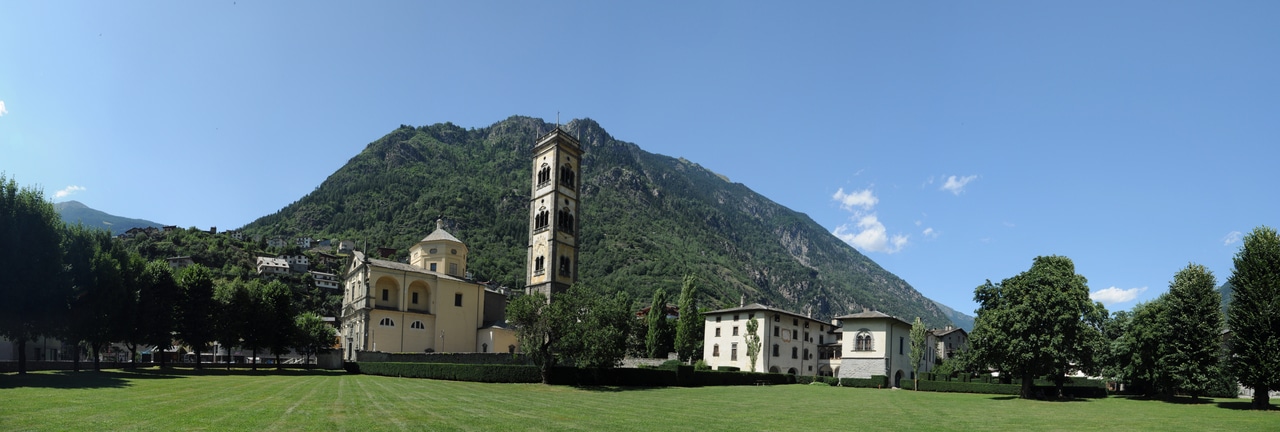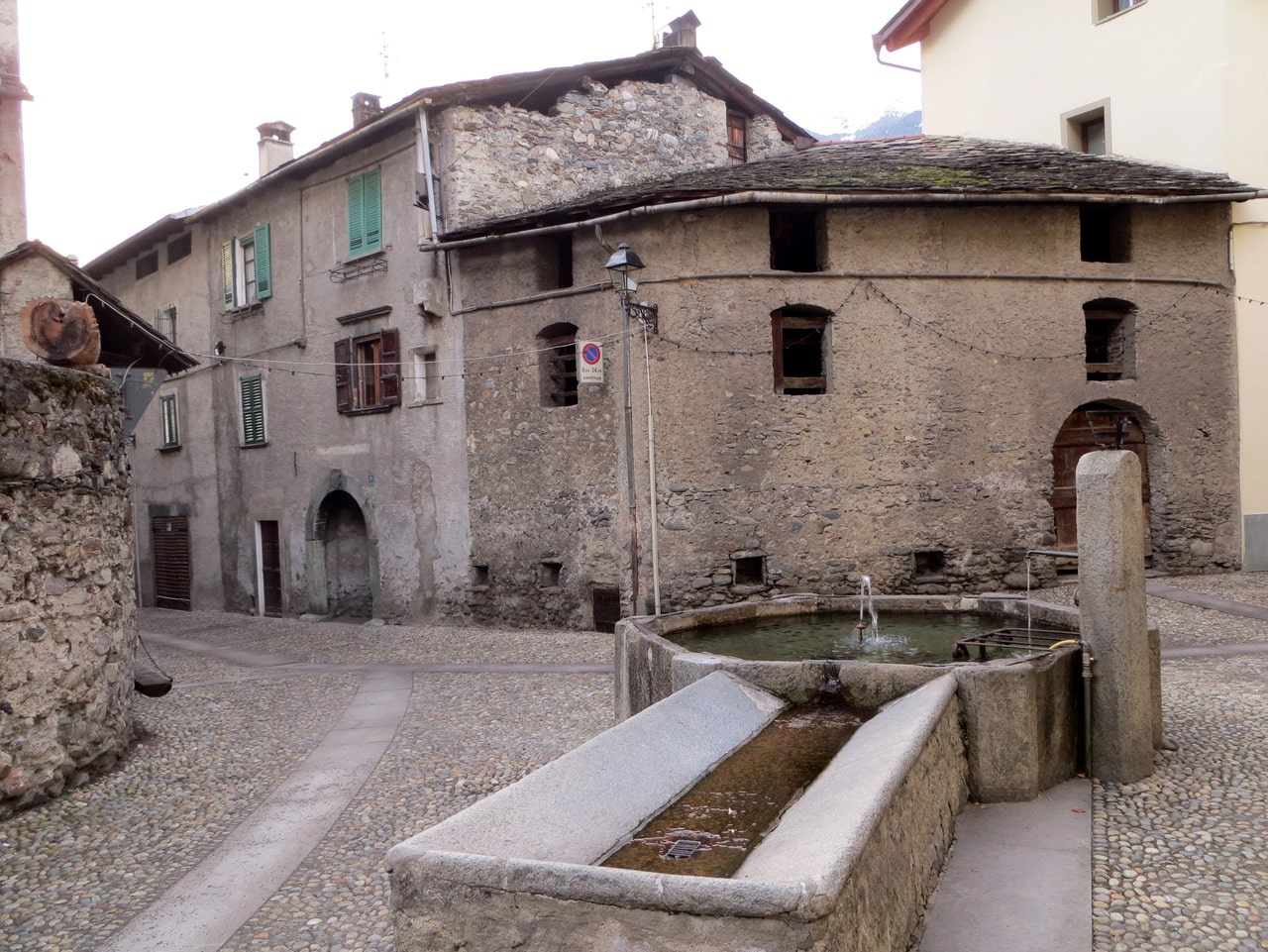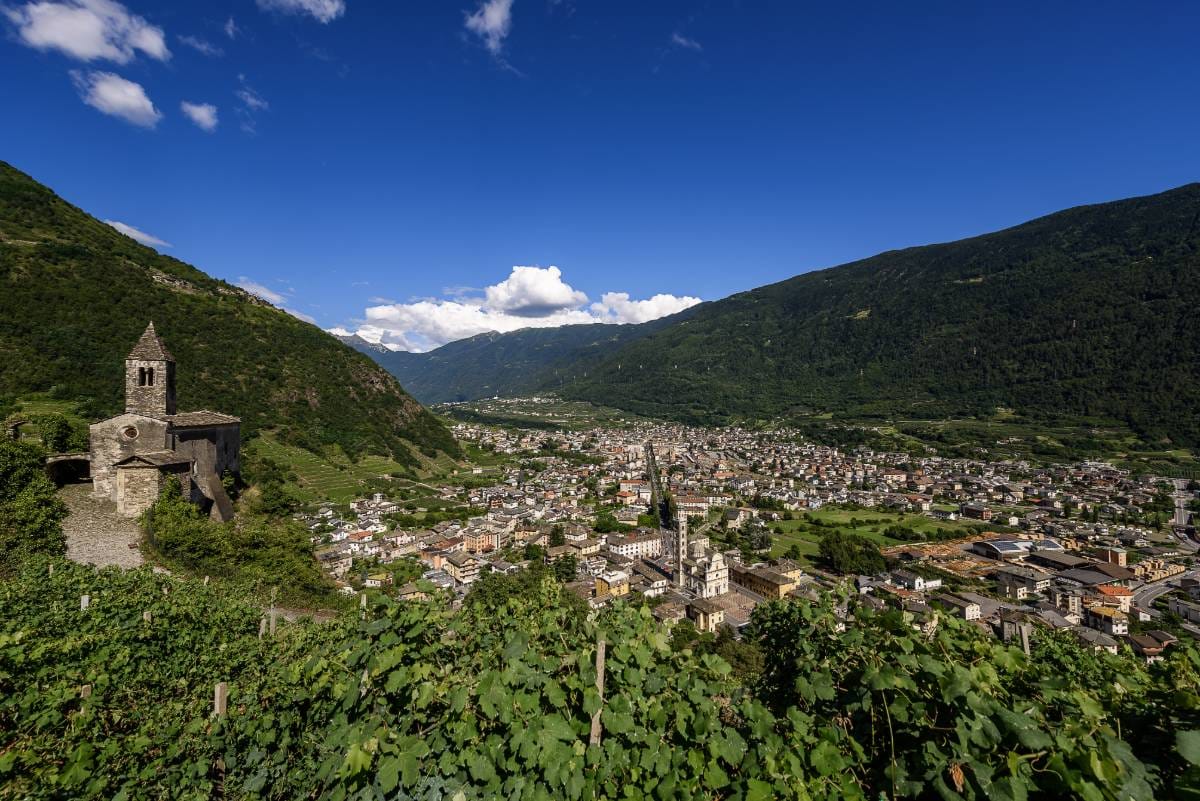Grosio (Gròos in the dialect of Valtellina) is a village situated in Lombardy, in the province of Sondrio, and is part of the Mountain Community of Valtellina of Tirano. It is an ancient village that preserves some of the most important archaeological, historical and artistic testimonies in all the province. The most ancient testimonies date back to the Bronze Age, as reported by The Rupe Magna, the most important archaeological monument of the Valtellina, located in the Park of the Engraving rocks of Grosio. In medieval times however, as for Mazzo, also the village of Grosio was one of the feuds under the Venosta's family dominion. As evidence of this era we find the two castles that dominate the town, the Castle of San Faustino and the Castle Nuovo or Visconti's Castle. Other important structures that enrich artistically the village of Grosio are the Church of San Giorgio, the Church of San Giuseppe, the Villa Visconti Venosta, which became the headquarters of the Municipal Museum.
Also worthy of mention is the famous Pruneri foundry, which operated continuously from 1822 to 1915 and from 1949 to 1956, except for the extraordinary opening in 1926 on the occasion of the merger of the Monument to the Fallen of Grosio. In the village there is a the street named after the founder and the wonderful bells of the Prepositurale. In the 16th century the village of Grosio also gave birth to Cipriano Valorsa, one of the best-known local painters and other personalities such as Emilio Visconti-Venosta, foreign minister of the Kingdom of Italy and his brother Giovanni, author of Ricordi di gioventù and of the satirical poem Il prode Anselmo.




















